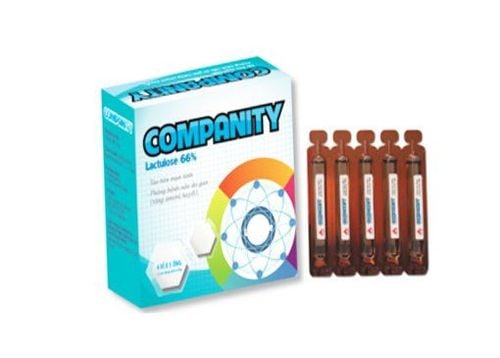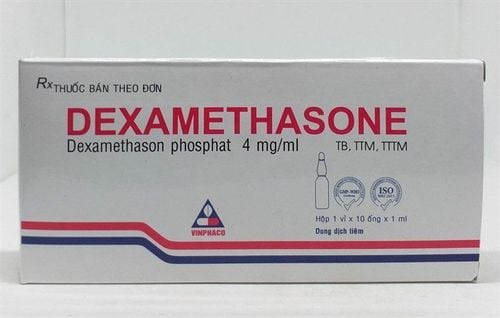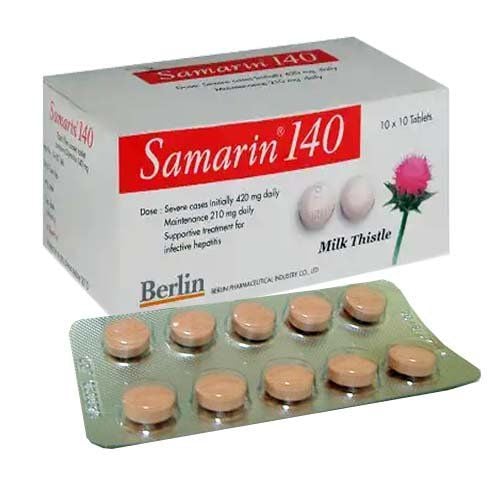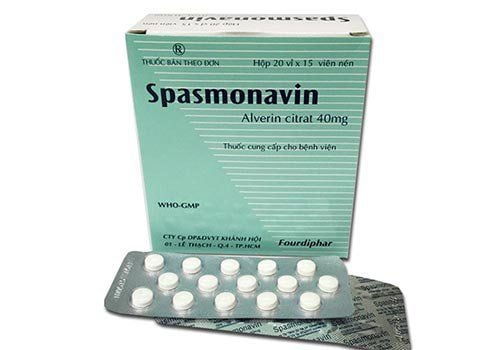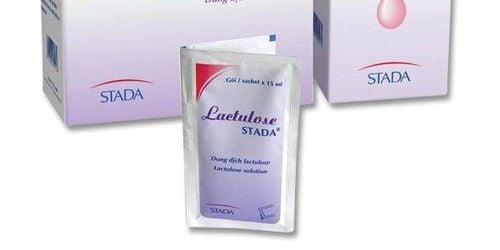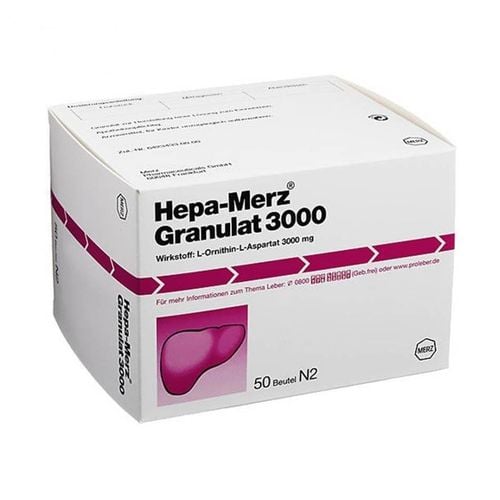This is an automatically translated article.
Hepaprofastopa is a prescription drug, used intravenously to treat acute and chronic liver diseases. To ensure the effectiveness of using Hepaprofastopa, patients need to follow the instructions of a specialist doctor, and refer to more information about the uses of Hepaprofastopa in the article below.
1. What are the uses of Hepaprofastopa?
1.1. What is Hepaprofastopa? Hepaprofastopa drug belongs to the group of gastrointestinal drugs, manufactured by Meditech Korea Pharm Co., Ltd. Korea, imported to Vietnam by Tan A Chau Trading Company.
The drug has the main ingredient L-Ornithine-L-Aspartate 500 mg or 5 grams. With the dosage form of brown glass tube with content of 500mg, box of 10 tubes x 5ml; 5g content, box of 10 tubes x 10ml.
The drug Hepaprofastopa is recommended for use in adults.
1.2. How does Hepaprofastopa work? Hepaprofastopa is a stable combination of two important endogenous amino acids L-Ornithine and L-Aspartate. Most liver diseases are caused by increased ammonia in the blood, L-Ornithine converts toxic ammonia into non-toxic urea and is excreted by the kidneys, helping the liver to perform its normal function. L-Aspartate performs the task of regenerating liver cells.
Therefore, Hepaprofastopa is prescribed by doctors in the following cases:
In the treatment of hyperammonemia in patients with acute or chronic liver diseases such as fatty liver, cirrhosis, viral hepatitis . In the treatment of disorders of onset of hepatic precoma, hepatic coma or hepatic encephalopathy. Contraindications:
Patients who are allergic to the main active ingredients L-Ornithine and L-Aspartate or any of the excipients of the drug. Patients with lactic acidosis, fructose-sorbitol intolerance, methanol poisoning and fructose-1,6-diphosphatase deficiency. Patients with severe renal impairment (with serum creatinine in excess of 3 mg/100 ml). Intramuscular
2. How to use Hepaprofastopa
2.1. How to use Hepaprofastopa Drug Hepaprofastopa is administered intravenously because the drug works up to 82.2 ± 28% after being injected intravenously. It can be used intravenously, but for the content of 5 grams, it is recommended to mix it with an infusion (with 5% Glucose solution or 0.9% Sodium chloride solution) because clinical experience shows that many patients experience sad side effects. Vomiting and vomiting after slow intravenous injection. Use medicine exactly as prescribed or under the doctor's prescription 2.2. Dosage of Hepaprofastopa For Hepaprofastopa 500mg: Acute or Chronic Hepatitis: Slow intravenous injection 1 or 2 ampoules a day for the first week, continue for the next 3 to 4 weeks if symptoms do not improve. benevolent. In severe cases, the dose can be increased to 4 ampoules a day.
For Hepaprofastopa 5g:
Chronic hepatitis: Starting dose of 10 to 20 g Hepaprofastopa (equivalent to 2 to 4 ampoules) per day, diluted in solution for infusion. Cirrhosis: Patients with mild symptoms: administer 5 g (equivalent to 1 ampoule) of Hepaprofastopa each time, 5 to 20 g (1 to 4 syringes) per day, diluted in solution for infusion. In patients with moderate to severe symptoms (including hepatic pre-coma and hepatic coma), 40 grams (equivalent to 8 ampoules) of Hepaprofastopa per day, diluted in solution for infusion, should be infused slowly. Consider adjusting the dose according to the patient's clinical symptoms. Handling missed dose:
Hepaprofastopa is administered by medical staff, so missed doses will rarely happen. However, if a dose is missed, it should be given as soon as possible and the next dose should be about 12 hours after the last dose. If it is too late to take the day's medication, skip the missed dose and continue with the next dose as scheduled. Failure to infuse a double dose will lead to more severe hepatitis. Treatment of overdose:
Overdosing will also be limited because the drug is administered by medical staff. However, if an overdose occurs, it is necessary to notify the treating doctor immediately for timely treatment.
Currently there is no specific antidote, the measures applied are mainly symptomatic treatment and situational handling. Patients with overdose of Hepaprofastopa should be closely monitored.
3. Notes when using Hepaprofastopa
Do not use Hepaprofastopa when it has expired on the package, the medicine changes color, has a strange smell, has sediment, the tube is broken, broken. Unsealed medication should be used immediately. Using the drug according to the recommended route of injection, not injecting intramuscularly can cause an abscess. Use caution when using the drug in children and the elderly because the metabolic rate in children and the elderly is greatly reduced. If it is necessary to use the drug, it should be closely supervised by medical staff. After each course of treatment, patients should have liver and kidney function tests to evaluate the effectiveness of treatment and consider whether it is necessary to continue taking Hepaprofastopa or not. Patients taking high doses of the drug should be closely monitored for blood urea and urinary urea. In particular, patients should not use stimulants during treatment, especially alcohol. Combine the right diet to increase the effectiveness of the treatment. Immediately notify your doctor of any unusual signs you have during treatment with Hepaprofastopa. Because there are not many safety studies for the use of Hepaprofastopa in pregnant and lactating women, the use of the drug should be considered, only when absolutely necessary and need to carefully evaluate the benefits. benefits and risks. Hepaprofastopa does not affect the ability to drive or use machines.
4. Side effects of Hepaprofastopa
Basically Hepaprofastopa has almost no side effects. The most common adverse effects are nausea, vomiting or burning sensation in the larynx which may be due to inappropriate infusion rate or patient hypersensitivity.
Management of ADR:
Mainly change the injection route or stop using the drug. If hepaprofastopa is being administered intravenously, the patient with the above signs should slow down or switch to diluting Hepaprofastopa with 5% Glucose solution or 0.9% Sodium chloride solution for intravenous infusion. If hepaprofastopa is being administered intravenously, the patient has the above symptoms need to reduce the infusion rate to the minimum, observe the patient's condition, can stop for a while to stabilize the patient and continue the infusion at the same rate. Slower. In case of severe hypersensitivity or allergic reaction, it is necessary to conduct supportive treatment (keep the airway open, breathe oxygen (if necessary) and use epinephrine, antihistamines, corticosteroids...).
5. How to store Hepaprofastopa
The shelf life of Hepaprofastopa is 36 months from the date of manufacture. Store at suitable room temperature (below 30 degrees Celsius), in original, shock-resistant cells. Do not expose the medicine to direct sunlight, or locations with high heat sources such as next to refrigerators, heaters or televisions that can easily lead to drug transformation. Avoid storing medicine in humid places such as bathrooms, refrigerators, do not freeze medicine. The medicine should be kept at a height out of the reach of small children due to the risk of falling and breaking the tube, which is dangerous for children. The above are the uses of Hepaprofastopa drug, knowing the information about its use and dosage will help bring the best treatment results to the patient.




